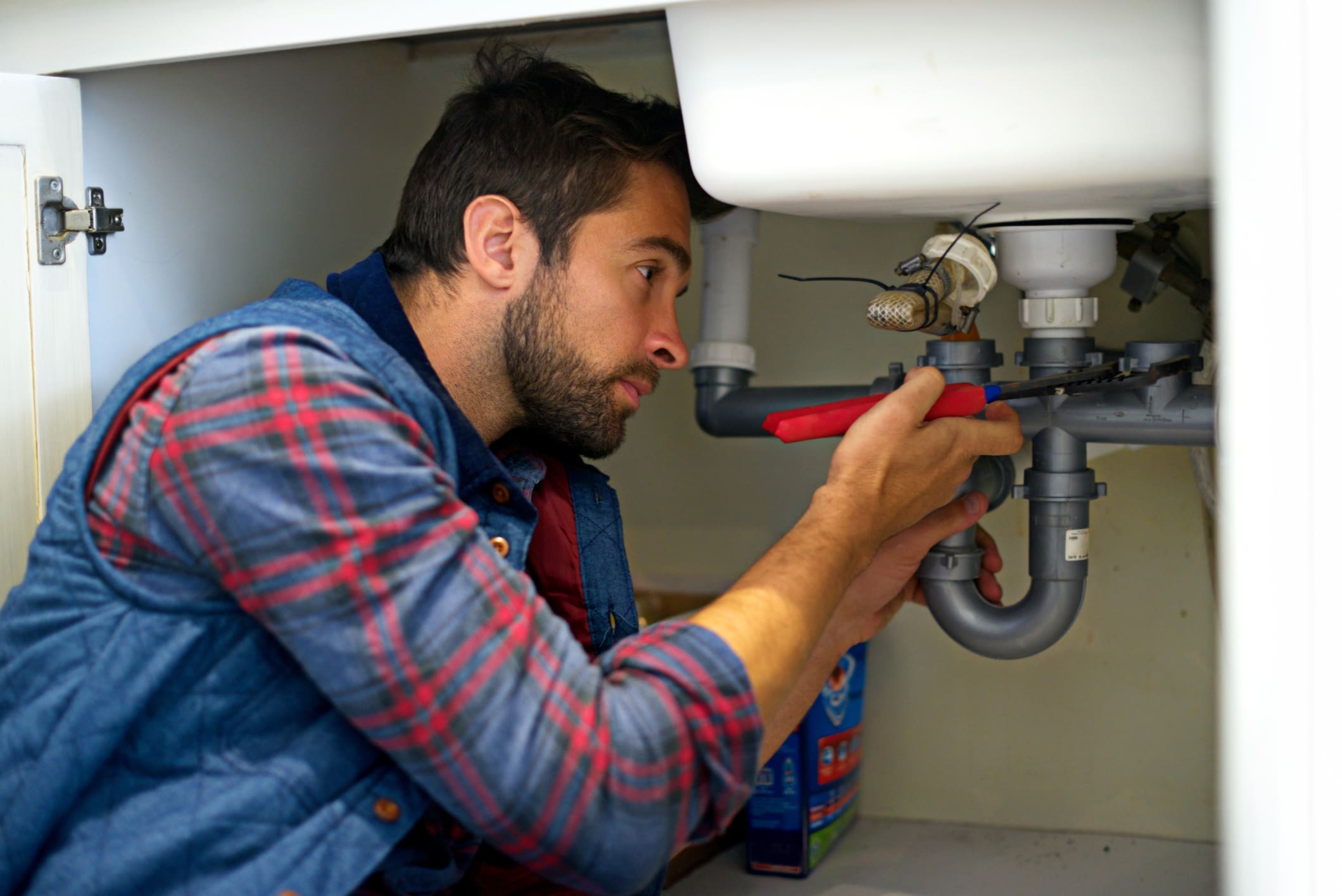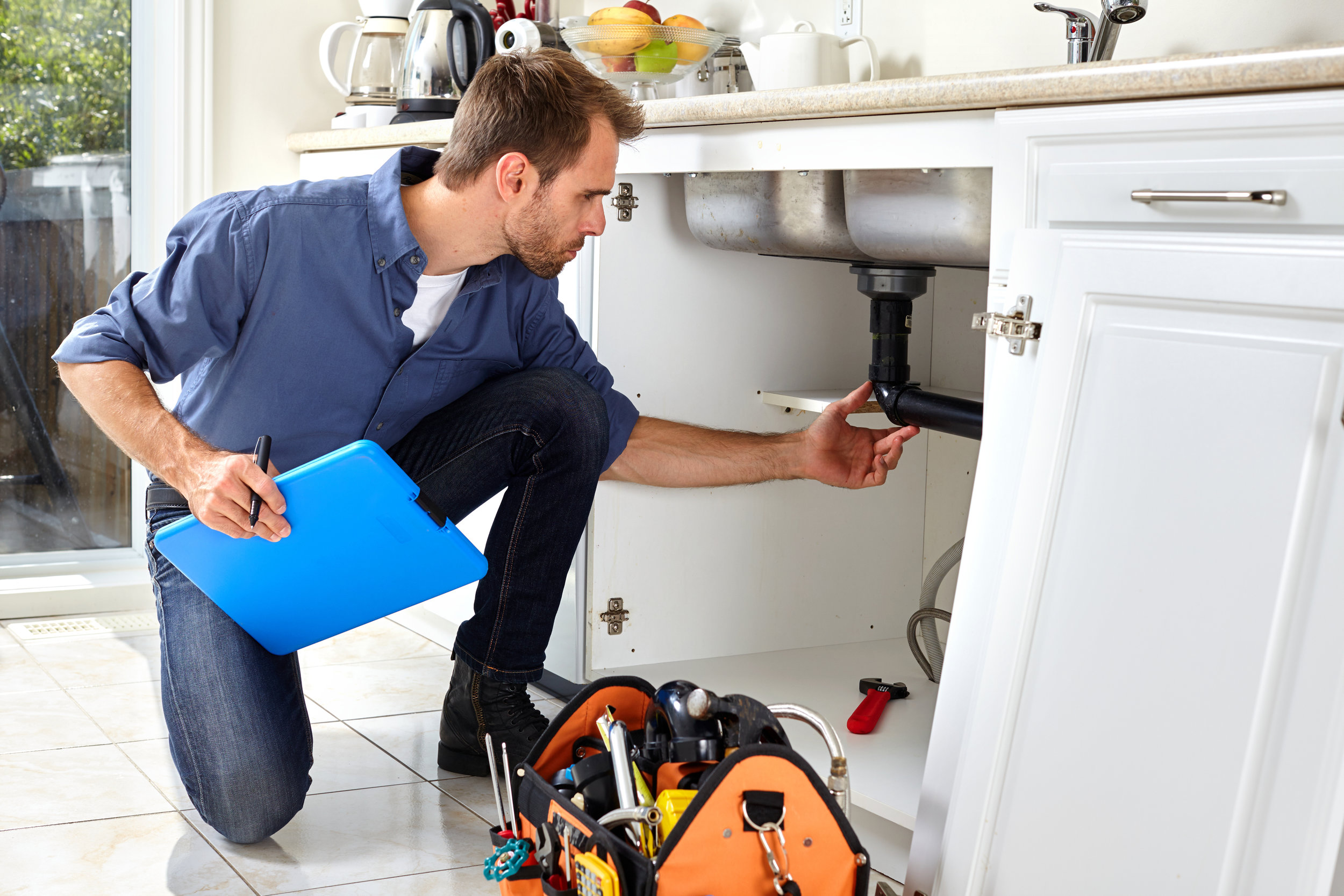The Ultimate Homeowner’s Checklist for Preventative Plumbing Maintenance
The Ultimate Homeowner’s Checklist for Preventative Plumbing Maintenance
Blog Article
Typical Plumbing Problems Every Property Owner Should Be Conscious Of
Property owners typically encounter a series of plumbing problems that can disrupt every day life. Common troubles consist of dripping faucets, blocked drains pipes, and running bathrooms. These issues normally come from worn-out components or debris build-up. Furthermore, low water pressure and burst pipes can signal much deeper issues. Recognizing these challenges is important for efficient maintenance. There are other less apparent issues that can emerge, which call for closer examination.
Leaky Faucets
Leaking taps can be an aggravating nuisance for homeowners. These persistent leaks not only produce an irritating sound yet likewise result in thrown away water and raised utility costs. A dripping tap frequently arises from worn-out washers, O-rings, or seals, which deteriorate in time as a result of regular use and exposure to water. Sometimes, the faucet's internal components might be rusted or harmed, demanding an extra comprehensive repair service or substitute. Determining the resource of the leak is crucial; property owners may need to take apart the tap to analyze its parts very closely. Normal maintenance can help avoid leaks, including cleansing aerators and looking for indicators of wear. Attending to a leaky faucet without delay can save water and decrease prices, making it a workable yet vital task for homeowners to take on in keeping their plumbing systems efficiently. Appropriate interest to this usual problem can result in a much more comfortable living environment.
Blocked Drains
Lots of house owners experience the disappointment of clogged drains at some point. This common plumbing problem can occur from various reasons, consisting of the accumulation of hair, soap residue, food particles, and oil. These materials can develop obstructions that hinder the flow of water, bring about reduce water drainage or total stoppage.In kitchens, grease and food scraps are commonly the offenders, while restrooms often suffer from hair and soap build-up. Normal maintenance, such as utilizing drain filters and staying clear of pouring fats down the sink, can help protect against clogs.When a blockage does take place, home owners might attempt to use a bettor or a business drainpipe cleaner as first treatments. Nevertheless, consistent problems might need specialist aid to stay clear of damages to pipelines - Plumbing. Comprehending the reasons and avoidance approaches for stopped up drains can save house owners time and money, ensuring a smoother pipes experience

Running Toilets
Running toilets are an usual problem that can stem from different causes, including damaged flappers and chain issues. The continuous running not only drainages however additionally causes increased utility costs. Addressing these concerns quickly can avoid further issues and bring back effectiveness to the pipes system.
Sources Of Running Commodes
A relentless flow of water from a toilet can be both inefficient and annoying, frequently indicating underlying issues within the plumbing system. One common cause is a worn flapper valve, which might not develop a proper seal, allowing water to continuously leak right into the dish. Furthermore, a malfunctioning fill shutoff can lead to extreme water flow, contributing to the trouble. Misaligned float mechanisms may additionally cause the commode to run as they stop working to manage the water degree appropriately. One more potential problem is mineral accumulation, which can block elements and prevent their functionality. Recognizing these reasons promptly can help home owners deal with the trouble prior to it escalates, guaranteeing reliable operation of their pipes system.
Consequences of Continuous Running
Although commonly neglected, the repercussions of a continuously running commode can greatly influence both water use and household expenditures. A running toilet can waste an average of 200 gallons of water daily, bring about boosted water expenses and unneeded resource usage. This too much water usage not only strains the home budget but likewise adds to environmental concerns, specifically in areas dealing with water lacks. In addition, the constant sound of running water can be a resource of aggravation, disrupting the harmony of the home - Plumbers Near Me. Prolonged concerns might lead to even more substantial plumbing problems if left unaddressed, resulting in additional monetary worries. Home owners need to identify the significance of timely repair services to minimize these unfavorable impacts and maintain an effective plumbing system
Fixing Running Toilet Issues
Commodes that constantly run can be an irritating issue for property owners, however identifying the reason is the initial step toward a reliable solution. Usual causes include a malfunctioning flapper, which may not produce an appropriate seal, allowing water to run away into the dish. Property owners ought to inspect the flapper for wear and change it if needed. Additionally, the fill valve might be malfunctioning, creating excess water to flow constantly. Changing this component or adjusting may fix the concern. Another prospective perpetrator is a misaligned float, which can be readjusted to the proper height. Routine upkeep and timely repairs can protect against running toilets, guaranteeing both water preservation and price savings on utility expenses.
Low Water Stress
Low water pressure can be a frustrating experience for homeowners, frequently materializing as a weak stream from showerheads and faucets. This concern can come from numerous reasons, consisting of debris build-up in pipelines, rusty plumbing, or issues with the local supply of water. Homeowners might originally discover low tide stress in certain see this website areas of the home, however it can rise to a much more prevalent issue if not addressed promptly.In some situations, malfunctioning stress regulators can additionally be accountable for inadequate water circulation. Normal maintenance, such as purging the water heating system and looking for obstructions, can assist minimize these problems. It may be needed to consult an expert plumber to diagnose and settle the underlying cause if reduced water pressure continues. Recognizing the source of low water pressure is vital for recovering proper water circulation and guaranteeing a practical plumbing system.
Ruptured Water lines
Burst pipelines can be a significant pipes concern, commonly resulting from the very same factors that add to low tide pressure, such as temperature level variations and maturing infrastructure. When water ices up within pipelines, it expands, increasing pressure up until the pipeline can no longer contain it, bring about a tear. Additionally, corrosion from long term direct exposure to water can compromise pipes, making them susceptible to rupturing under normal pressure.Homeowners may discover indications of a burst pipeline through unexpected water leaks, wet places on ceilings or walls, and an unforeseen increase in their water costs. Immediate action is essential; falling short to address a ruptured you can try here pipeline can lead to comprehensive water damages, mold growth, and costly repair services. Routine inspections and upkeep of pipes systems can aid stop this issue. In addition, shielding pipelines in chillier areas and replacing old piping can substantially decrease the danger of ruptured pipelines, protecting the home's plumbing integrity.
Water Heating System Issues
How can house owners recognize water heating system problems before they escalate? Normal examination and upkeep can aid find prospective problems early. Homeowners ought to seek signs such as inconsistent water temperature, uncommon sounds, or a decline in hot water supply. Leaks or pools around the unit might show a malfunction that requires instant attention. The look of corrosion or debris build-up can also signal the demand for maintenance.Additionally, home owners need to keep track of the age of their water heater; most devices have a life-span of 8 to 12 years. If the heating unit is approaching this age and showing signs of wear, it may be time to assess substitute. Routine flushing of the storage tank can prevent sediment buildup, extending the unit's life. By staying watchful and addressing issues without delay, house owners can avoid pricey fixings and ensure their hot water heater operates successfully for several years to find.
Sewage System Line Troubles
Lots of property owners may encounter sewage system line issues at some time, influencing their plumbing system's overall capability. Typical concerns include blockages, tree root invasions, and pipeline damages. Obstructions frequently result from the build-up of oil, hair, and international things that obstruct the circulation of wastewater. Tree origins can infiltrate sewage system lines, creating cracks and leaks. In addition, maturing pipelines may damage or rust, resulting in additional complications (Drain Services). Indications of drain line difficulty consist of slow-moving drains pipes, undesirable odors, and sewage back-ups, which can pose health threats. Homeowners ought to resolve these troubles quickly to avoid comprehensive damages and costly repair work. Routine upkeep, such as scheduled assessments and cleaning, can assist stop significant concerns. In extreme instances, expert treatment may be essential to repair or change damaged sections of the drain line. Knowing these possible issues can help homeowners take positive measures to preserve their plumbing systems effectively
Regularly Asked Questions
How Can I Protect Against Pipes Problems in My Home?
To stop pipes issues, normal maintenance is important. Home owners should examine pipes for leaks, clean drains, and screen water stress. In addition, educating themselves regarding appropriate use can significantly lower the threat of future plumbing problems.
When Should I Call a Plumbing Professional As Opposed To Fixing It Myself?
When to call a plumbing typically depends on the severity of the concern, figuring like it out. Substantial leakages, relentless clogs, or unknown issues call for professional aid, guaranteeing safety and security and avoiding more damages instead of taking the chance of individual efforts at repair work.
What Are the Signs of Hidden Pipes Leaks?
Signs of hidden pipes leaks consist of inexplicable water bills, wet areas on wall surfaces or ceilings, mold development, and a moldy odor. These indications usually recommend underlying issues that need specialist evaluation and repair work for resolution.
Exactly how Commonly Should I Have My Plumbing Evaluated?
Normal plumbing inspections are advised each to two years. This regularity aids recognize prospective problems early, making sure the system remains reliable and lowering the threat of expensive repair work or unforeseen emergency situations in the future.
Exist Do It Yourself Solutions for Minor Pipes Issues?

Report this page